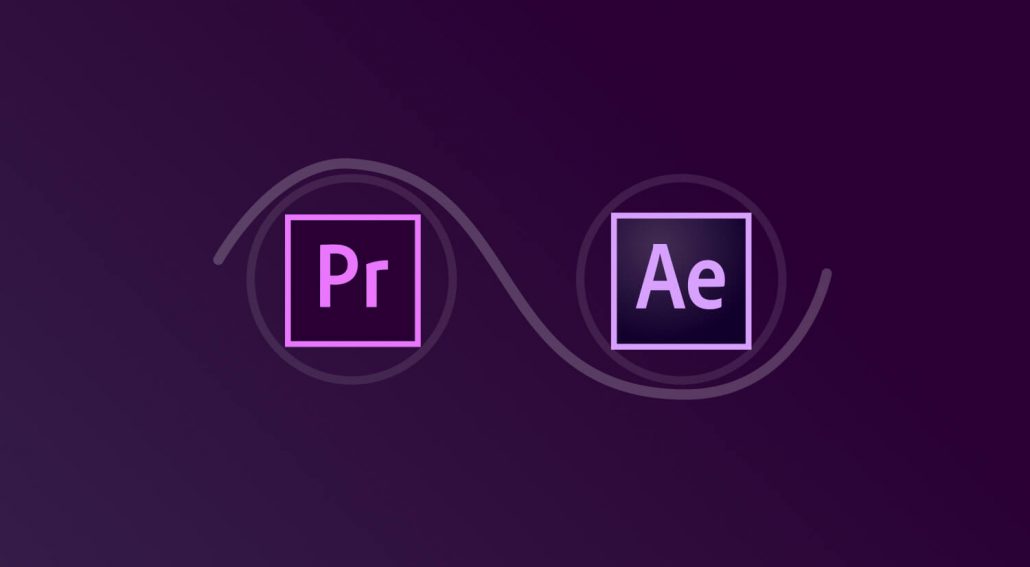Mar 06, 2019 Start with Premiere and get your video clips in the format you want with the desired content. Use the timeline in Premiere (it’s better here than in After Effects) to get audio and video synced in the way you want. Then switch over to After Effects to polish your video content.
How to Import After Effects Comps to Premiere After creating a comp in After Effects (and saving the project), open Premiere Pro and head to the project panel. Right click and select Import. Then simply find the After Effects project with your desired comp, select it, and click open. Create compositions in After Effects and use Dynamic Link to eliminate intermediate rendering in Adobe Premiere Pro. Import from Photoshop, Illustrator, and more. Collaborate with others and integrate with 300+ software and hardware partners. Learn about Team Projects. Adobe announced it will be updating terminology across Premiere Pro, After Effects, and Audition to reflect their commitment in providing an inclusive toolset for all users. The first of these changes were implemented in the October 2020 release of After Effects and are now included in the Premiere Pro and Audition public Betas apps. After Effects must be installed. I'm now experiencing the 'After Effects must be installed to import this file.' I first noticed it in a new project where I had created a Motion Graphics Template in AE and added it to the Essential Graphics Panel. When trying to use the template in Premiere, it couldn't recognize that AE was installed.
/article-new/2020/09/premiereproquickexport.jpg?lossy)
Cover image via
After Effects and Premiere Pro are two of Adobe’s flagship post-production apps. But which one do you need for which task? Let’s find out.

When you’re creating a new project, knowing when to use Premiere and when to use After Effects can make or break your project. They are both extremely powerful programs, that can sometimes perform the same functions, but most of the time, one of them is better at something than the other.
Adobe Premiere And After Effects
Now the differences between these two programs are pretty apparent to anyone who has used them before. But, if you’re new to the suite, it can be confusing determining which one you need to learn for a given post-production task.
Let’s take a look at Adobe’s two main video production software tools and see what they do — and when to use one over the other.
Adobe Premiere Pro

Adobe Premiere And After Effects Training
Adobe Premiere Pro is an NLE (nonlinear editor) with the main function of editing video clips together in a sequence. This is the program that most beginners open to create a simple video with multiple clips and music. It’s incredibly scalable — easy to use for beginners, and still powerful enough for a master editor. It’s got just about everything you need to complete a professional video: a clip editor, color correction tools, audio programs, and even graphics software.
Tasks for Premiere:
- Editing a video with existing clips imported from a camera.
- Editing audio within your video — Premiere’s audio functions far surpass AE’s.
- Placing transitions between clips within your timeline.
- Creating/polishing any type of video — short films, music videos, social videos, etc.

Adobe After Effects
Adobe After Effects is a digital motion graphics platform used to create either simple animations or intricate graphics sequences. If you ever hear of a “motion graphics expert,” chances are they’re proficient in After Effects. The program adds motion to layers and assets that you couldn’t do in Premiere. Its motion tools are much better than Premiere’s, and it’s the preferred tool for adding motion to videos, images, and designs. It’s a “hard to learn, easy to master” type of program, but once you get the hang of it, it’s essential for creating motion graphics or visual effects for your projects.
Tasks for After Effects:
- Creating motion graphics packages for your projects.
- Adding motion blur and movement to assets and layers.
- Manipulating multilayer sequences that require detailed keyframing.
- Creating title sequences that include keyframe-based animations.
After Effects Vs. Premiere Pro: What’s the Difference?
To sum it all up, Premiere assembles all of your assets and creates a final video product, while After Effects is mainly an asset-generation tool. People complete projects in After Effects all the time, though — it’s great for creating motion-based social video with only a song bed underneath, or even creating a full animation.
Adobe Premiere And After Effects Tutorials
So really, there’s no true “vs.” in this argument. It’s kind of like debating PowerPoint and Word — you use them for different tasks, even though they share some similar functions. They are extremely well linked, though — and like many editors, I use them concurrently all of the time. Once you get familiar with both programs, you’ll learn how to dynamically link After Effects compositions to your Premiere projects so you can access both assets at the same time. (For more information about dynamic linking, check out the video by Justin Odisho above.)
Adobe Premiere And After Effects Vr Plugins

Adobe Premiere And After Effects Classes
Looking for more on Premiere and After Effects? Check these out.
